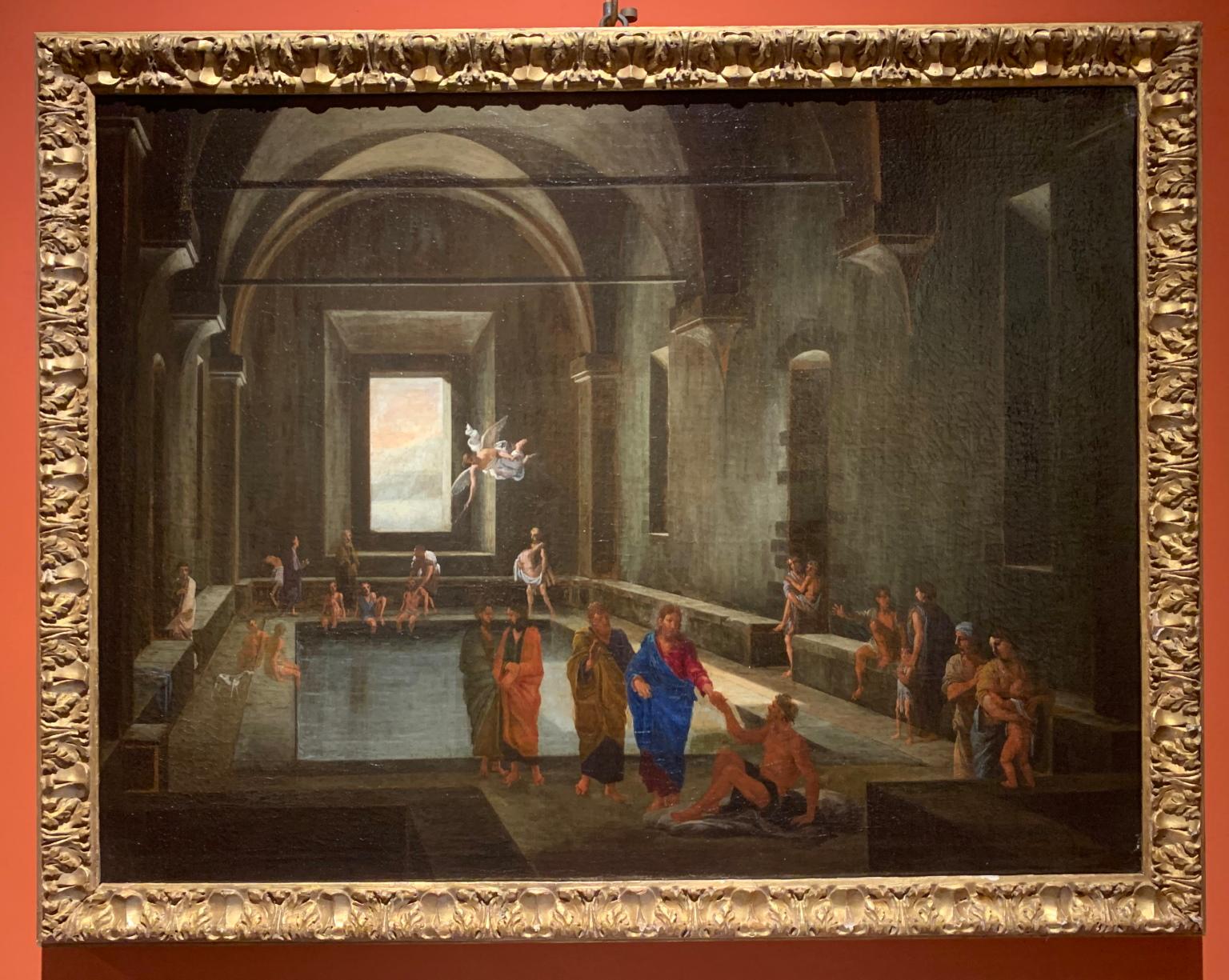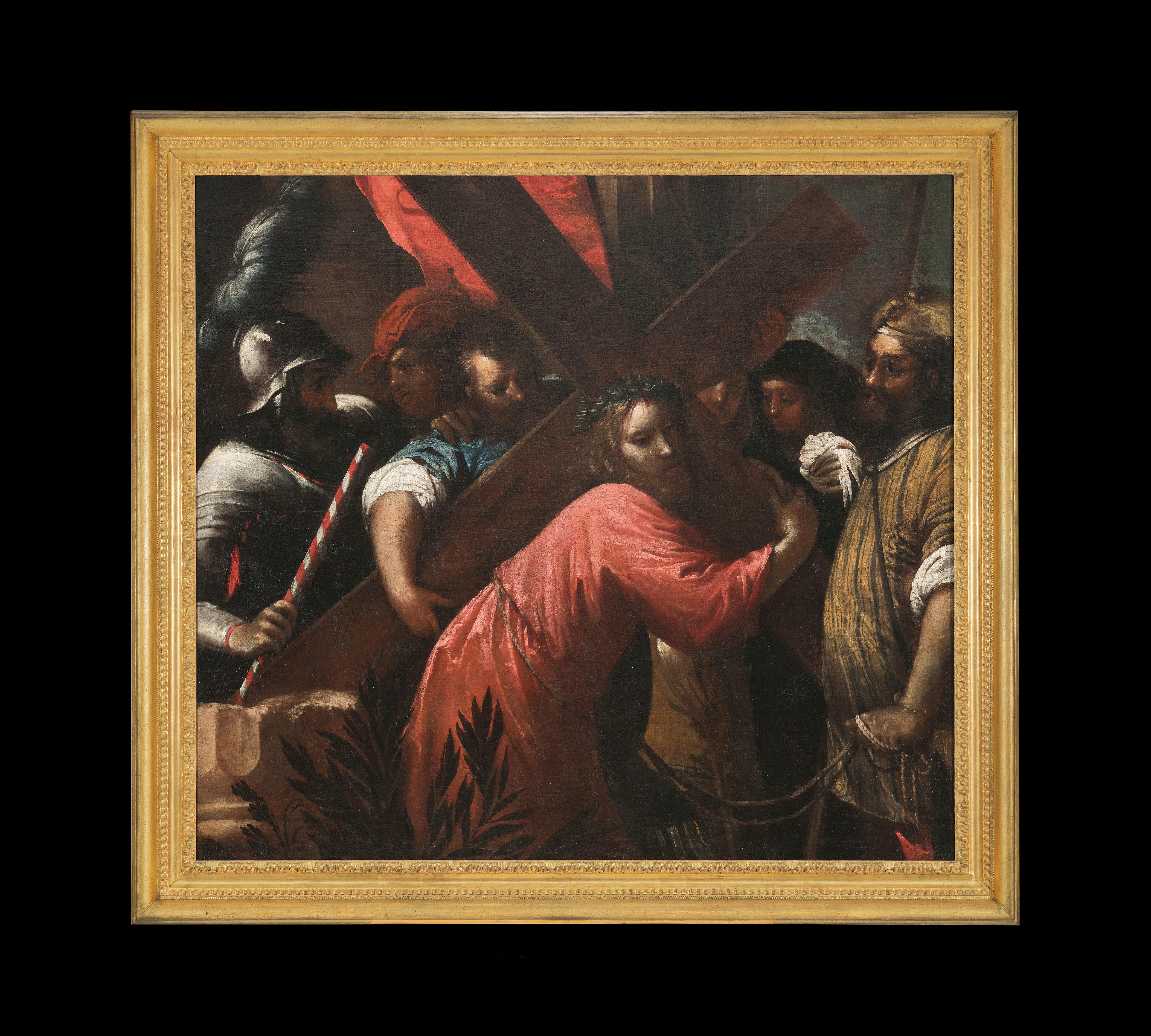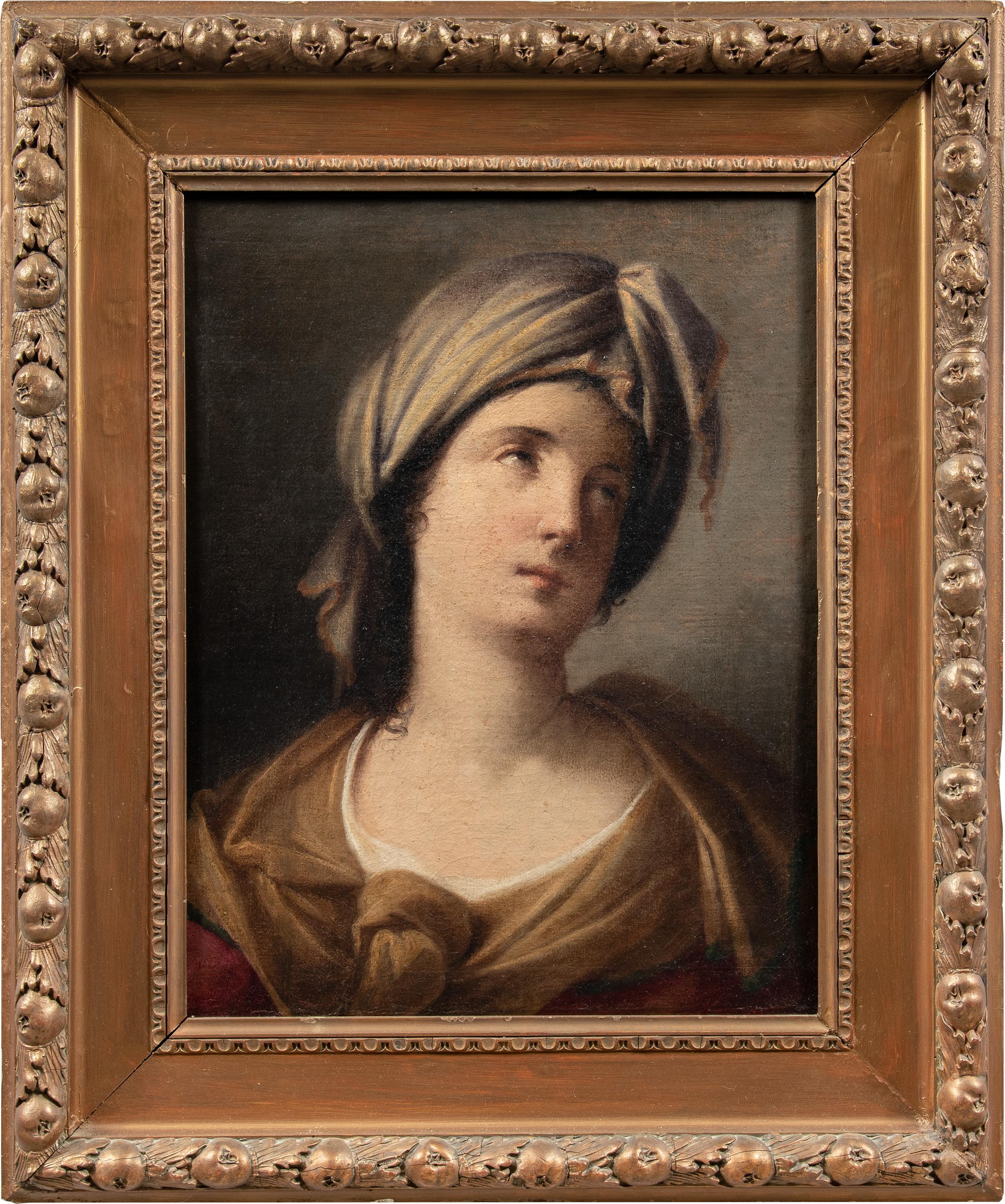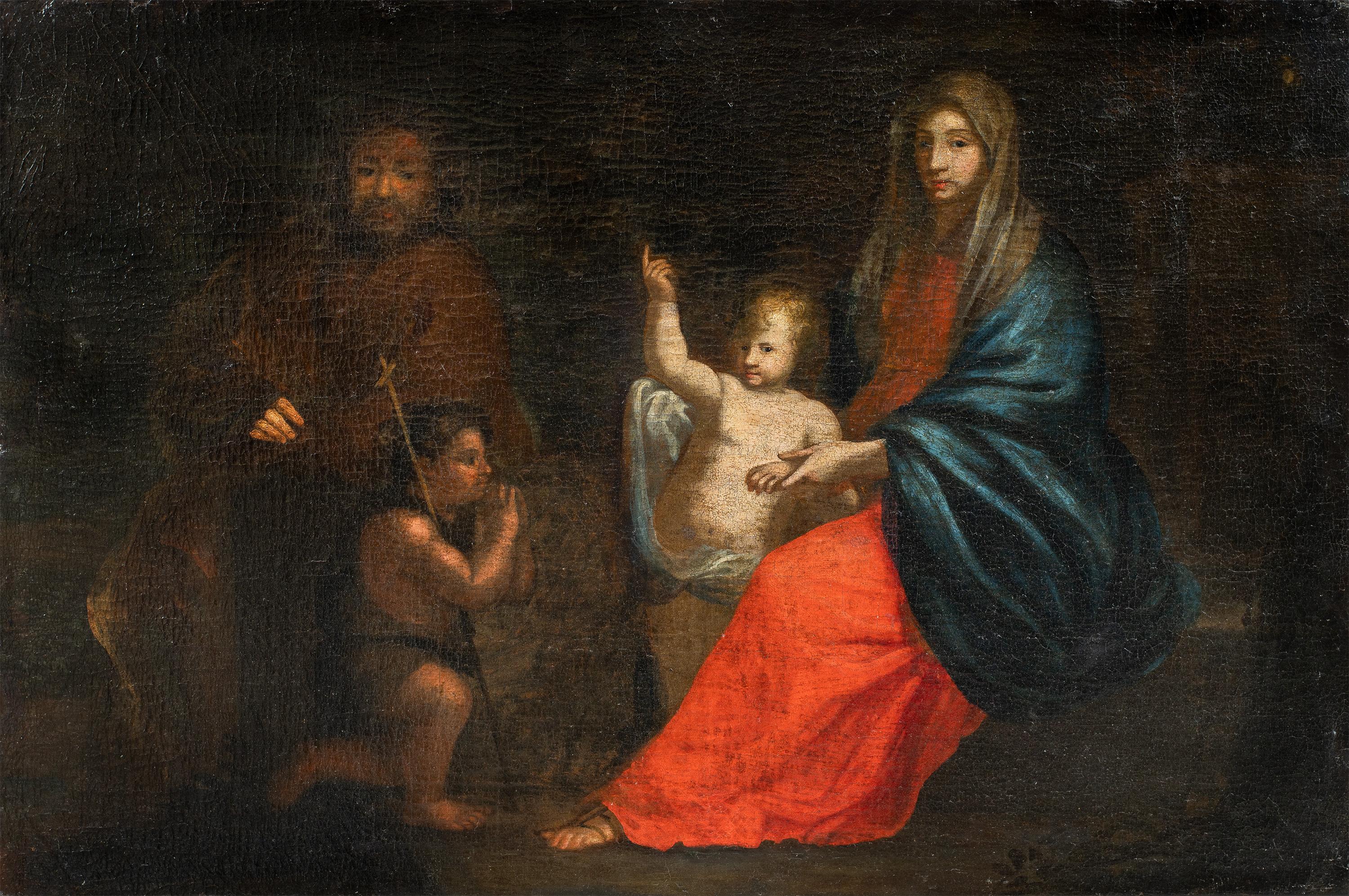Items Similar to 18th century oil sketches for a Baroque interior - a pair
Want more images or videos?
Request additional images or videos from the seller
1 of 9
Louis Chéron18th century oil sketches for a Baroque interior - a pairCirca 1710
Circa 1710
About the Item
A FEAST OF THE GODS WITH VENUS AND BACCHUS
Collections:
With Appleby Brothers, London, June 1957;
Hazlitt, Gooden & Fox, London, 1961;
John and Eileen Harris, acquired from the above, to 2015.
Literature:
Jacob Simon and Ellis Hillman, English Baroque Sketches: The Painted Interior in the Age of Thornhill, 1974, cat. no.12 (as by Louis Laguerre);
Elizabeth Einberg (ed.), Manners and Morals: Hogarth and British Painting, 1700-1760, exh. cat., London (Tate Gallery), 1987, cat. no.10 (as by Louis Laguerre);
Tabitha Barber and Tim Bachelor, British Baroque: Power and Illusion, exh. cat., London (Tate Britain), 2020.
Exhibited:
Twickenham, Marble Hill House, English Baroque Sketches: The Painted Interior in the Age of Thornhill, 1974, no.12 (as by Louis Laguerre);
London, Tate Gallery, Manners and Morals: Hogarth and British Painting, 1700-1760, 1987, no.10 (as by Louis Laguerre);
London, Tate Britain, British Baroque: Power and Illusion, cat. no 92, 2020.
CUPID AND PSYCHE BEFORE JUPITER
Collections:
With Appleby Brothers, London, June 1957;
Hazlitt, Gooden & Fox, London, 1961;
Anthony Hobson, acquired from the above, to 2015.
These recently re-united paintings are the most ambitious surviving baroque ceiling sketches made in Britain in the early eighteenth century. From the Restoration until the rise of Palladianism in the 1720s decorative history painting formed the preeminent artistic discipline in Britain. It was a field dominated by Continental artists including the Italian Antonio Verrio and the Frenchmen Louis Laguerre and Louis Chéron (1660-1725). The present paintings have recently been identified as being by Chéron having long been attributed to Laguerre. Executed on an unusually grand scale, the sketches were almost certainly preparatory for one of the great interior schemes of the early eighteenth century.
Louis Chéron was born in Paris on 2 September 1660 into a notable French protestant family of artists, the son of a miniature painter and an engraver, and the younger brother of Elizabeth-Sophie Chéron a notable painter and engraver. Chéron trained at the Académie under Charles Le Brun and Noel Coypel, then in Rome from 1676. He twice won the prix de Rome twice, in 1676 and 1678; on the first occasion he received financial help from his sister to visit Italy. His earlier biographer, Dezallier d’Argenville states that Chéron claimed: ‘Quand on lui demandoit qui etoit son maître, il nommoit Raphael.’ Two albums of Chéron’s drawings, many made in Italy, testify to this allegiance, with thirty sheets after Raphael’s frescos in Rome which were, according to Vertue, ‘always much valyed & esteemed amongst the curious.’ Back in Paris he received a number of commissions, notably in 1687 and 1690 from the Guild of Goldsmiths for paintings to be presented in May of those years to the cathedral of Notre Dame in Paris. Studies for the 1687 painting, The Prophecy of Habbakuk (Musée du Louvre).
Chéron decided to leave France, no doubt spurred by the persecution of Huguenots following the revocation of the edict of Nantes in 1685. He is recorded in the registers of the Huguenot congregation at the Savoy Chapel in London in 1693 and was naturalized in 1710. His going to London was possibly at the suggestion of Ralph, first earl and later duke of Montague, for whom in 1695 in the recently completed Boughton House, Northamptonshire, he painted a number of ceilings, including those of the saloon and the staircase, with mythological scenes. The album in the British Museum contains six drawings for the drawings at Boughton. He also worked in London at Montague House, at Ditton Park, Buckinghamshire, at Burghley House, Northamptonshire, and in the gallery and little dining-room at Chatsworth House, Derbyshire. In 1709 he was one of five artists invited to submit designs for the dome of St Paul's Cathedral.
The present paintings are unusually large sketches made in preparation for what must have been one of Chéron’s grandest decorative cycles. The oil sketches show that the ceilings were to be composed of an illusionistic sky populated by a pantheon of gods. The swirling mass of Baroque figures demonstrates Chéron’s appeal; bringing a Continental language of decoration to English interiors. The sketches seem likely to date from about 1710 but are currently unrelated to a specific project. The first Cupid and Psyche before Jupiter reprises the subject-matter Chéron had used at Boughton on the ceiling of the Little Hall. As at Boughton, the present sketch shows a multitude of figures seated on clouds, on the left hand side the figure of seated Minerva, on the right the figure of Mars and a seated figure of Mercury; in the centre of the composition Jupiter, with a large eagle at this feet, also identifiable are the figures of Venus, Bacchus and Hercules, Flora and Diana. Chéron’s sketch is structured around architectural elements; Telamons support an entablature and the cloud supporting Venus and her attendants break onto the wallspace, suggesting the scheme was also designed to include the decoration of the rest of the room. Compositionally the sketch of Cupid and Psyche is close to the work Chéron carried out at Burghley, particularly The Marriage of Hercules and Hebe on the ceiling of the Great Hall. The composition and approach – particularly the vertical dynamism - are similar: the seated figure of Jupiter at the centre of the composition is close to the figure of Jupiter at the centre of the Cupid and Psyche before Jupiter.
The ceiling design of The Feast of the Gods is even more architectonic. The assemblage of gods – identical to the figures found in Cupid and Psyche before Jupiter – are shown bursting through a frieze of Telamons supporting an entablature. The riotous composition displays the illusionistic grandeur of Chéron’s most mature compositions. Narratively the pair of designs are closely related and clearly formed part of a programme of decoration for two conjoining rooms. The architectural decoration is also similar in both designs, but the visual emphasis is slightly different. In Cupid and Psyche before Jupiter, the action is more condensed and immediate suggesting the design is for a smaller room than The Feast of the Gods.
These two oil sketches first appeared on the market in June 1957 when they were with Appleby Brothers in London and attributed to James Thornhill. The canvases were with Hazlitt, Gooden & Fox by 1961 when they were sold separately to the great architectural historian John Harris and the eminent bibliophile Anthony Hobson. It was Harris who suggested that the canvases were by Laguerre by the time he lent The Feast of the Gods to the exhibition English Baroque Sketches: The Painted Interior in the Age of Thornhill held at Marble Hill in 1974. The Feast of the Gods was then lent to the important exhibition: Manners & Morals: Hogarth and British Painting 1700-1760 held at the Tate Gallery in 1987 as the single example of a great French Baroque ceiling design from the period. More recently they paintings have been identified as the work of Chéron and The Feast of the Gods was shown at the Tate’s major Baroque exhibition in 2020 as by Chéron.
These large sketches are two of the most ambitious surviving oil studies made by the most significant decorative history painter in Britain in the early eighteenth century. They neatly illustrate the prevailing fashion for Baroque, illusionistic decoration which dominated British interiors in the first decades of the eighteenth century. Chéron was a highly important figure within the London art world and Vertue’s obituary notice stressed that he was: ‘of an affable good natur’d temper. very communicative of his Art with a plain open sincerity that made him most agreeable & belv’d. living regular & sober.’ Vertue adds after Chéron’s posthumous sale: ‘many sketches for works that he did as several noblemans houses. for the Duke of Montague at Boughton & at Ditton. Duke of Devonshire at Chatsworth. Duke of Whartons. The Earl of Exeter.’ Suggesting that these two remarkable sketches may ultimately be identified with a great, lost scheme at one of these houses and that the sketches themselves were in Chéron’s studio at his death.
- Creator:Louis Chéron (1660 - 1725, French)
- Creation Year:Circa 1710
- Dimensions:Height: 36 in (91.44 cm)Width: 48.13 in (122.26 cm)
- Medium:
- Movement & Style:
- Period:
- Condition:Both paintings are preserved in excellent condition, in twentieth century gilt-wood frames.
- Gallery Location:London, GB
- Reference Number:1stDibs: LU150727718822
About the Seller
5.0
Recognized Seller
These prestigious sellers are industry leaders and represent the highest echelon for item quality and design.
1stDibs seller since 2021
- ShippingRetrieving quote...Ships From: London, United Kingdom
- Return PolicyA return for this item may be initiated within 14 days of delivery.
More From This SellerView All
- 18th century allegorical painting of The Triumph of BeautyLocated in London, GBExhibited: London, Royal Academy, 1800, no. 93 What was happening in British history painting in around 1800? In recent discussions of the emergence of a British School of history painting following the foundation of the Royal Academy in 1768, this is a question which is rarely posed and one which is not easily answered. Examination of surviving Royal Academy exhibition catalogues reveals a profusion of artists’ names and titles, few of which remain immediately recognizable, whilst endeavours to explain the impact of exhibition culture on painting - such as the 2001 Courtauld show Art on the Line - have tended to focus on the first and second generation of Royal Academician, rather than young or aspiring artists in the early nineteenth century. This makes the discovery and identification of the work under discussion of exceptional importance in making sense of currents in English painting around 1800. Executed by Edward Dayes...Category
18th Century Old Masters Figurative Paintings
MaterialsCanvas, Oil
- 20th century oil painting entitled The Unknown CornerLocated in London, GBCollections: Robert Isaacson; James Draper, New York, 2014. Exhibited: Cambridge, The Fitzwilliam Museum, Beggarstaffs: William Nicholson and James Pr...Category
Early 20th Century Modern Figurative Paintings
MaterialsCanvas, Oil
- Roman 18th century terracotta model for the sculpture of San Camillo de LellisLocated in London, GBThis remarkably fluid terracotta bozetto was made in preparation for Pietro Pacilli’s most important public commission, a large-scale marble statue of San Camillo de Lellis for the nave of St Peter’s Basilica in Rome. Expressively modelled, this terracotta sculpture is a rare and significant work made by a major Roman sculptor at a transformative moment of European sculpture. Pacilli began his working life on the great Baroque decorative projects initiated in the seventeenth century, but he found success as a restorer of ancient sculpture working to finish antiquities for a tourist market, becoming an important figure in the emergence of an archaeologically minded Neoclassicism. Pacilli trained Vincenzo Pacetti and provided important decorative work for the Museo Pio-Clementino, at the same time he is recorded restoring some of the most celebrated antiquities excavated and exported during the period. Pacilli was born into a family of Roman craftsmen, his father Carlo was a wood carver, and Pacilli is recorded working with him on the Corsini Chapel in San Giovanni Laternao as early as 1735. In 1738 his terracotta model of Joseph and Potiphar’s Wife won the first prize in the second class of the sculpture concorso at the Accademia di San Luca, this is particularly notable as Bartolomeo Cavaceppi came third. He worked as a carver and stuccoist completing works for the churches of San Marco and SS. Trinita dei Domeniciani Spagnoli. Pacilli operated as a sculptor and restorer of antiquities from his studio at the top of the Spanish Steps, close to Santa Trinita dei Monti, where he is listed as a potential vendor to the Museo Pio-Clementino in 1770. In 1763 Pacilli completed a silver figure of San Venanzio for the treasury of San Venanzio. He is recorded as Pacetti’s first master and it was evidently through Pacilli that he began to acquire his facility as a restorer of ancient sculpture. Pacilli, at his studio ‘poco prima dell’Arco della Regina alla Trinita dei Monti,’ exercised, what the nineteenth-century scholar, Adolf Michaelis called ‘rejuvenating arts’ on several important pieces of classical sculpture, including in 1760 the group of a Satyr with a Flute for the natural brother of George III, General Wallmoden, Hanovarian minister at Vienna. In 1765, Dallaway and Michaelis record that Pacilli was responsible for the restorations, including the addition of a new head, to the Barberini Venus which he had acquired from Gavin Hamilton. The Venus was then sold to Thomas Jenkins, who in turn passed it on to William Weddell at Newby Hall. In 1767 Pacilli exported a series of ancient busts ‘al naturale’ including portraits of Antinous, Julius Ceaser and Marus Aurelius, also a statue of a Muse and a Venus. As early as 1756 Pacilli seems to have been operating as an antiquarian, helping to disperse the collection of the Villa Borrioni. Pacilli supplied sculpture to notable British collectors, including Charles Townley, who on his first trip to Italy purchased the Palazzo Giustiniani statue of Hecate from Pacilli. Pacilli was involved with the Museo Pio Clementino from its conception, supplying busts of Julius Ceaser and a Roman Woman as well as completing stucco putti surmounting the arms of Pope Bendedict XIV to signal the entrance to the new Museo Critiano. In 1750 Il Diario Ordinario del Chracas announced that Pacilli had begun work on a sculpture of San Camillo de Lellis for St Peter’s. Camillo de Lellis founded his congregation, the Camillians, with their distinctive red felt crosses stitched on black habits in 1591. Having served as a soldier in the Venetian army, Camillo de Lellis became a novitiate of the Capuchin friars, he moved to Rome and established a religious community for the purpose of caring for the sick. In 1586 Pope Sixtus V formerly recognised the Camillians and assigned them to the Church of Santa Maria Maddalena in Rome. Camillo de Lellis died in 1614 and was entombed at Santa Maria Maddalena, he was canonised by Benedict XIV on June 26, 1746. It was an occasion that prompted the Camillians to make a number of significant artistic commissions, including two canvases by Pierre Subleyras showing episodes from San Camillo’s life which they presented to Benedict XIV. In 1750 Pacilli was commissioned to fill one of the large niches on the north wall of the nave with a sculpture of San Camillo. The present terracotta bozetto presumably had two important functions, to enable Pacilli to work out his ideas for the finished sculpture and at the same time to show his design to the various commissioning bodies. In this case it would have been Cardinal Alessandro Albani and Monsignor Giovan Francesco Olivieri, the ‘economo’ or treasurer of the fabric of St Peter’s. Previously unrecorded, this terracotta relates to a smaller, less finished model which has recently been identified as being Pacilli’s first idea for his statue of San Camillo. Preserved in Palazzo Venezia, in Rome, the terracotta shows San Camillo with his left hand clutching his vestments to his breast; the pose and action more deliberate and contained than the finished sculpture. In producing the present terracotta Pacilli has expanded and energised the figure. San Camillo is shown with his left hand extended, his head turned to the right, apparently in an attempt to look east down the nave of St Peter’s. The model shows Pacilli experimenting with San Camillo’s costume; prominently on his breast is the red cross of his order, whilst a sense of animation is injected into the figure through the billowing cloak which is pulled across the saint’s projecting right leg. The power of the restrained, axial contrapposto of bent right leg and outstretched left arm, is diminished in the final sculpture where a baroque fussiness is introduced to the drapery. What Pacilli’s terracotta demonstrates, is that he conceived the figure of San Camillo very much in line with the immediate tradition of depicting single figures in St Peter’s; the rhetorical gesture of dynamic saint, arm outstretched, book in hand, head pointed upwards was perhaps borrowed from Camillo Rusconi’s 1733 sculpture of St. Ignatius...Category
18th Century Baroque Figurative Sculptures
MaterialsTerracotta
- 19th century portrait painted in St Petersburg in 1819Located in London, GBSigned, inscribed and dated, lower right: 'Geo Dawe RA St Petersburgh 1819', also signed with initials, lower centre: 'G D RA'; and signed and inscribed verso: 'Geo Dawe RA Pinxit 1819 St Petersburgh'; Also inscribed on the stretcher by Cornelius Varley with varnishing instructions. Collections: Private collection, UK, 2010 Literature: Galina Andreeva Geniuses of War, Weal and Beauty: George Dawe...Category
19th Century Old Masters Portrait Paintings
MaterialsCanvas, Oil
- Early oil depicting the Great Fire of LondonLocated in London, GBThe Great Fire of London in September 1666 was one of the greatest disasters in the city’s history. The City, with its wooden houses crowded together in narrow streets, was a natural fire risk, and predictions that London would burn down became a shocking reality. The fire began in a bakery in Pudding Lane, an area near the Thames teeming with warehouses and shops full of flammable materials, such as timber, oil, coal, pitch and turpentine. Inevitably the fire spread rapidly from this area into the City. Our painting depicts the impact of the fire on those who were caught in it and creates a very dramatic impression of what the fire was like. Closer inspection reveals a scene of chaos and panic with people running out of the gates. It shows Cripplegate in the north of the City, with St Giles without Cripplegate to its left, in flames (on the site of the present day Barbican). The painting probably represents the fire on the night of Tuesday 4 September, when four-fifths of the City was burning at once, including St Paul's Cathedral. Old St Paul’s can be seen to the right of the canvas, the medieval church with its thick stone walls, was considered a place of safety, but the building was covered in wooden scaffolding as it was in the midst of being restored by the then little known architect, Christopher Wren and caught fire. Our painting seems to depict a specific moment on the Tuesday night when the lead on St Paul’s caught fire and, as the diarist John Evelyn described: ‘the stones of Paul’s flew like grenades, the melting lead running down the streets in a stream and the very pavements glowing with the firey redness, so as no horse, nor man, was able to tread on them.’ Although the loss of life was minimal, some accounts record only sixteen perished, the magnitude of the property loss was shocking – some four hundred and thirty acres, about eighty per cent of the City proper was destroyed, including over thirteen thousand houses, eighty-nine churches, and fifty-two Guild Halls. Thousands were homeless and financially ruined. The Great Fire, and the subsequent fire of 1676, which destroyed over six hundred houses south of the Thames, changed the appearance of London forever. The one constructive outcome of the Great Fire was that the plague, which had devastated the population of London since 1665, diminished greatly, due to the mass death of the plague-carrying rats in the blaze. The fire was widely reported in eyewitness accounts, newspapers, letters and diaries. Samuel Pepys recorded climbing the steeple of Barking Church from which he viewed the destroyed City: ‘the saddest sight of desolation that I ever saw.’ There was an official enquiry into the causes of the fire, petitions to the King and Lord Mayor to rebuild, new legislation and building Acts. Naturally, the fire became a dramatic and extremely popular subject for painters and engravers. A group of works relatively closely related to the present picture have been traditionally ascribed to Jan Griffier...Category
17th Century Old Masters Landscape Paintings
MaterialsOil, Canvas
- 18th century portrait of the painter Nathaniel DanceLocated in London, GBCollections: Robert Gallon (1845-1925); Private Collection, UK. Oil on canvas laid down on panel Framed dimensions: 11.5 x 10 inches This highly engaging, previously unpublished portrait by Johan...Category
18th Century Old Masters Portrait Paintings
MaterialsCanvas, Oil, Wood Panel
You May Also Like
- Italian Baroque religious figurative painting of the 17th century oil on canvasLocated in Florence, ITPainted with gilt wood frame, 58 x 75 cm. is the work of the painter couple Viviano Codazzi (Valsassina 1603-Rome 1670), who specialized as a quadraturist and landscape painter, and...Category
1640s Baroque Interior Paintings
MaterialsCanvas, Oil
- Andata al calvarioBy Sebastiano MazzoniLocated in Balerna, TISebastiano Mazzoni Andata al calvario Olio su tela, Sec. XVI, cm 130x143; con cornice 167x153x9 Il dipinto rappresenta un episodio della Passione di Cristo cui accennano appena i Van...Category
17th Century Baroque Interior Paintings
MaterialsCanvas, Oil
- Baroque Italian Old Master, Madonna, Child, Angels, Oval, Marratta, ChristmasBy Workshop Of Carlo MarattaLocated in Greven, DEReligious Painting, depicting Madonna and the Child, surrounded by Angels by the Circle of Carlo Maratta (Maratti). This painting is wonderful example of...Category
18th Century Baroque Figurative Paintings
MaterialsCanvas, Oil
- Circle Teniers, Flemish Art, Peasants smoking and drinking in a Tavern InteriorBy David Teniers the YoungerLocated in Greven, DECircle or Follower of David Teniers, Peasant in a Tavern Inn, drinking and smoking. Oil on canvas, Framed: 39 x 47 cm. Typical Flemish Baroque Interior...Category
17th Century Baroque Figurative Paintings
MaterialsOil, Canvas
- Girolamo Negri (Bolognese master)- 17th century figure painting - SybilBy Girolamo Negri called Il BocciaLocated in Varmo, ITGirolamo Negri, known as Boccia (Bologna 1648 - Bologna 1720) - Sibilla. 65 x 50.5 cm without frame, 90.5 x 75 cm with frame. Antique oil painting on canvas, in a carved and gilded...Category
Late 17th Century Baroque Figurative Paintings
MaterialsCanvas, Oil
- Baroque Italian painter - 17th century figure painting - Holy Family - VirginLocated in Varmo, ITItalian master (17th century) - Holy Family with St. John the Baptist. 66 x 99cm. Oil on canvas, unframed. Lined canvas. Good state of conservation of the pictorial surface, there...Category
Mid-17th Century Baroque Figurative Paintings
MaterialsCanvas, Oil
Recently Viewed
View AllMore Ways To Browse
What Is A Antique
Pair Oil
18th Century Oil
Sketches Of Hands
Painting For Dining Room
Almost A Pair
Antique French Interior Design
Italian Baroque Art
Baroque Interior
Baroque Oil
Fashion Sketch
Baroque Oil Painting
Dining Painting Large
Interior Living Room Painting
English Baroque
London 1961
18th French Oil
French Baroque Art



